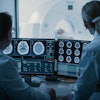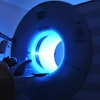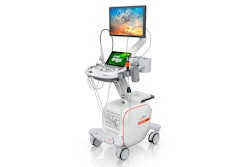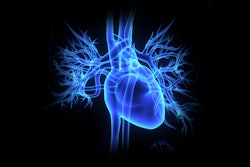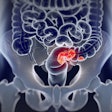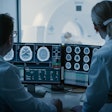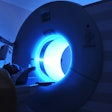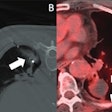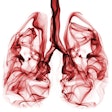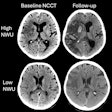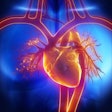Contrast-enhanced cardiac CT (CECT) can help localize fatty tissue in the heart, a study published July 24 in JAMA Cardiology found.
Researchers led by Saman Nazarian, MD, PhD, from the Hospital of the University of Pennsylvania Pavilion in Philadelphia found that CECT achieved high accuracy in their study that focused on fatty tissue insulating the atrioventricular node and the proximal specialized conduction system (AVCS) from surrounding muscle. This capability could pave the way for better heart treatment strategies.
“Noninvasive visualization of the AVCS may provide utility in planning for electrophysiologic, interventional, and surgical procedures by providing an anatomic roadmap,” Nazarian and co-authors wrote.
The AVCS contains muscle cells responsible for transmitting excitatory impulses from the atria to the ventricle – also known as the conductive myocardium. When this system is infiltrated by fatty deposits, it predisposes patients to heart disease and complications.
Previous studies suggest that CECT can identify heart structures by localizing myocardial fat with high specificity.
The researchers highlighted that noninvasive localization of the AVCS could improve planning for transcatheter aortic valve procedures or surgery for heart disease. The Nazarian team investigated whether CECT could accurately localize this system by identifying fat that insulates the conductive myocardium.
The study included 20 patients with an average age of 66 years. The patients underwent CECT less than one month before atrial fibrillation ablation and electroanatomic localization of the His electrogram signal on electroanatomic mapping. Eight of the patients had coronary artery disease while five had a history of first- or second-degree atrioventricular blockage.
On preprocedural CECT, the average left atrial volume index was 32.7 mL/m2, and the average echocardiographic left ventricular ejection fraction was 54%.
The researchers noted that all patients had low attenuation at the apex of the triangle of Koch, which houses the atrioventricular node. The average attenuation of the AVCS fat segmentation was 2.9 Hounsfield units. On electroanatomic mapping, the average distance from the His electrogram to the closest AVCS fat voxel was 3.3 mm.
Finally, the researchers observed no association between the Hounsfield unit intensity or volume of the AVCS fat on CT and the PR interval.
The study authors highlighted that their findings could be useful in ablation of para-Hisian atrial and ventricular arrhythmias or anterior and midseptal accessory pathways and transcatheter valve replacements.
“If the findings can be validated in patients with congenital heart disease, CECT may lower the incidence of iatrogenic conduction system injury during congenital heart surgery,” they wrote.
The full study can be found here.

